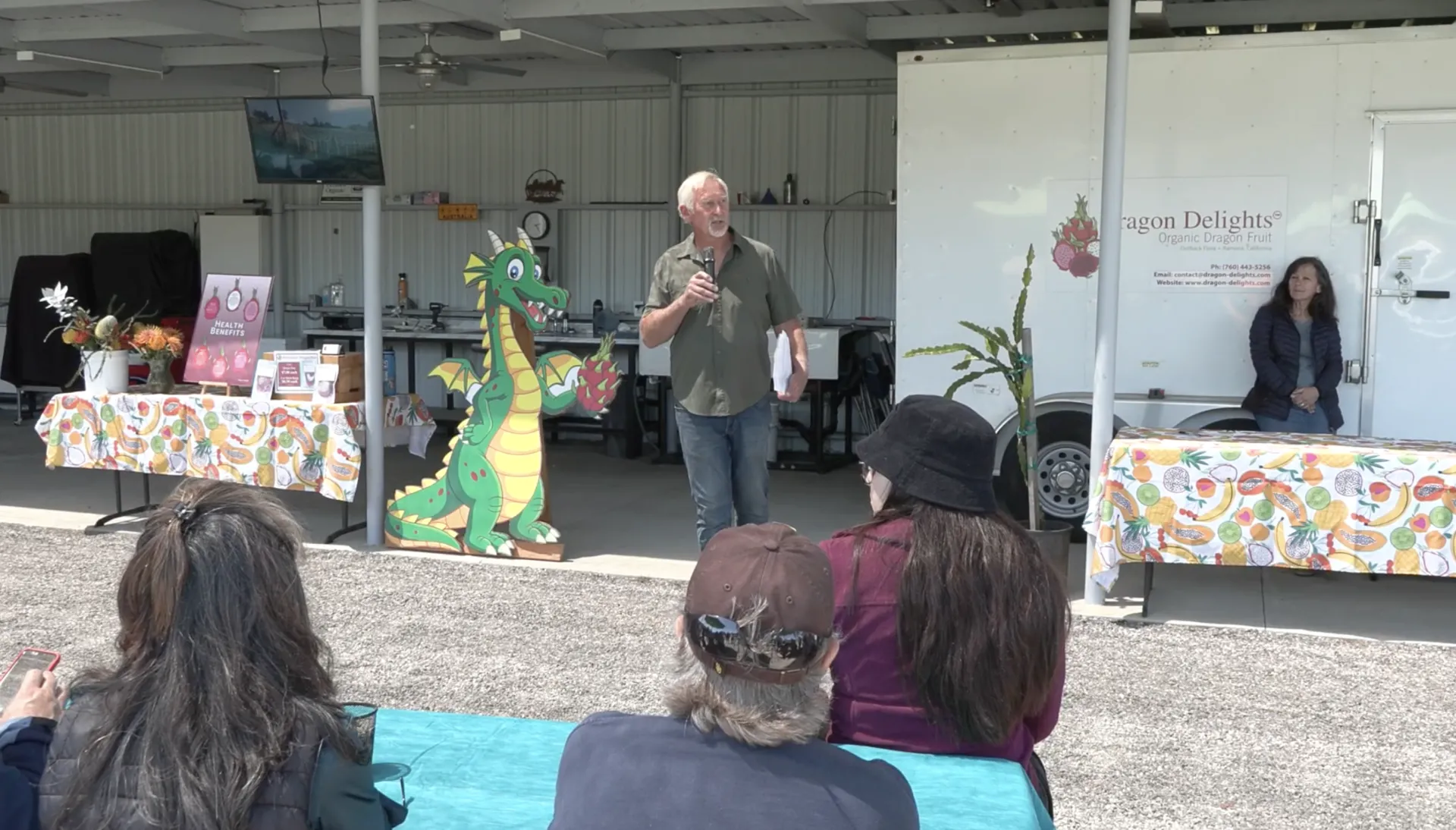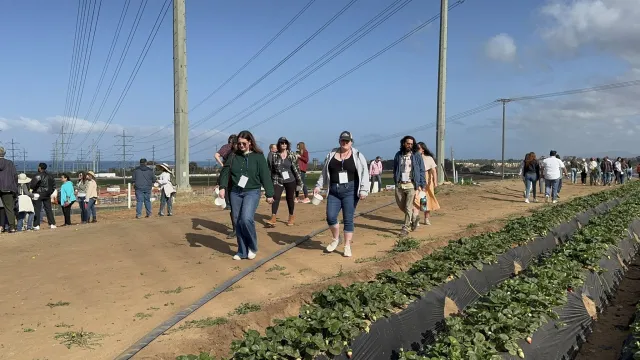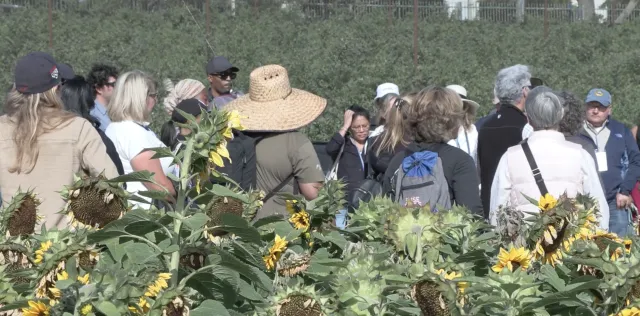
The California Agritourism Summit brought together farmers, academics, officials and tourism promoters in San Diego on May 14-15 with a common goal: to connect rural communities with urban communities and open new paths for small producers.
Agritourism is a form of rural tourism that allows visitors to experience life in the countryside, learn about agricultural processes, interact with local producers, and enjoy activities such as harvests, workshops, tastings or guided tours.
For small-scale farmers, it represents an opportunity to diversify their incomes and strengthen the link between the consumer and the origin of food. An essential key within agritourism is having crops actively growing in the field.
The two-day California Agritourism Summit began with tours of successful agritourism operations at Carlsbad Strawberry Company, Wallace Ranch Dragon Fruit Farm, Beach House Winery, Carlsbad State Street Farmers Market, Vegetable Shop at Chino Family Farm in Rancho Santa Fe, San Pasqual Valley Soils, Hatfield Creek Vineyards & Winery, and Dragon Delights. The first day ended with a networking reception at Flower Fields at Carlsbad Ranch. The second day offered expert panels discussing regulations, insurance and marketing. At roundtable discussions, participants could meet others from their region to discuss needs and exchange ideas.

Among the attendees was Adolfo Martinez, who, a few years ago, bought a few acres of land in Ramona, east of San Diego. After a long career in the vegetable industry, Martinez retired and began to wonder how to take advantage of all the knowledge acquired to give his land a new purpose. And what better way to do it than through agritourism?
"I want to do something for the grandchildren, for the children, so that they learn where the products we eat come from," Martínez said enthusiastically. He has planted some vegetables and is exploring how to get more out of his land. Like many other small farmers, Martinez is concerned about the bureaucracy they face when making inroads into the agritourism industry. Issues like this were discussed extensively during the summit.
A growing collaborative network
The event was organized by the UC Sustainable Agriculture Research and Education Program (SAREP) and UC Cooperative Extension in San Diego County with participation from key stakeholders, including the California Department of Food and Agriculture, and organizations such as California Grown and Visit California. For many, it was a unique opportunity to connect efforts that had taken place locally or in isolation until now.
"We are excited about this summit,” said Vice President Glenda Humiston. “We have people from all over the state: producers, government authorities, processors, all looking to develop agritourism in California."
From the state level, CDFA Secretary Karen Ross underlined agritourism's economic, cultural and social value. "This model allows small farmers to work without intermediaries and strengthen the community fabric,” she said. “It is a wonderful way to celebrate our agricultural and cultural diversity."

Local experiences, state impact
Ramiro Lobo, UC Cooperative Extension small farms advisor for San Diego County, stressed that this summit represents the evolution of years of work. "Previous meetings were more local,” he explained. “Today, with the participation of state entities and organizations such as California Grown, we are able to give it a much broader approach."
From a San Diego perspective, Jan Gonzales, UC ANR community education supervisor, valued the momentum that the event represents to strengthen agritourism in the region. "Now we can work more strongly together with local small farmers,” she said. “This support allows us to move forward more clearly and achieve results."
Digital tools for a new chapter
The growth of agritourism also requires new communication strategies, according to Kasey Carmel, chief digital officer at California Grown. “We are about to launch a joint website with UC ANR to promote agritourism throughout California,” Carmel said. “This event was key to connecting, showing what we do and planning new forms of collaboration."
Rachael Callahan, state coordinator of agritourism, recalled that the university's commitment to agritourism began in the 1990s, when farmers began to open their ranches to the public to diversify their income. Since then, UC ANR has offered training and measured the economic impact of small businesses on agritourism, Callahan explained, "while California Grown has the reach to promote them."

Comprehensive support for small farmers
Small-scale farmers face various challenges, including high insurance costs, limited access to water and difficulties marketing their products. Darlene Ruiz, UCCE small farms staff research associate, explained that many farmers come in with questions about how to develop their businesses and practical issues such as insurance and available subsidies. Ruiz noted that offering help and advice in Spanish facilitates access for those who prefer to receive guidance in their native language and strengthens inclusion within the agricultural sector.
Connecting the field with the community
With more than 400 crops produced in the state, agritourism is not only an economic alternative for California's small farmers, but also an educational tool that allows younger generations to connect with the origin of their food.
Thanks to the work of UC ANR, small farmers are not alone. Through extension programs, technical advice and resources accessible in multiple languages, UC ANR strengthens the state's agricultural fabric, promoting sustainability, innovation and equity in the countryside.
For more information about agritourism, you can visit the California Agritourism website: https://sarep.ucdavis.edu/agritourism.
